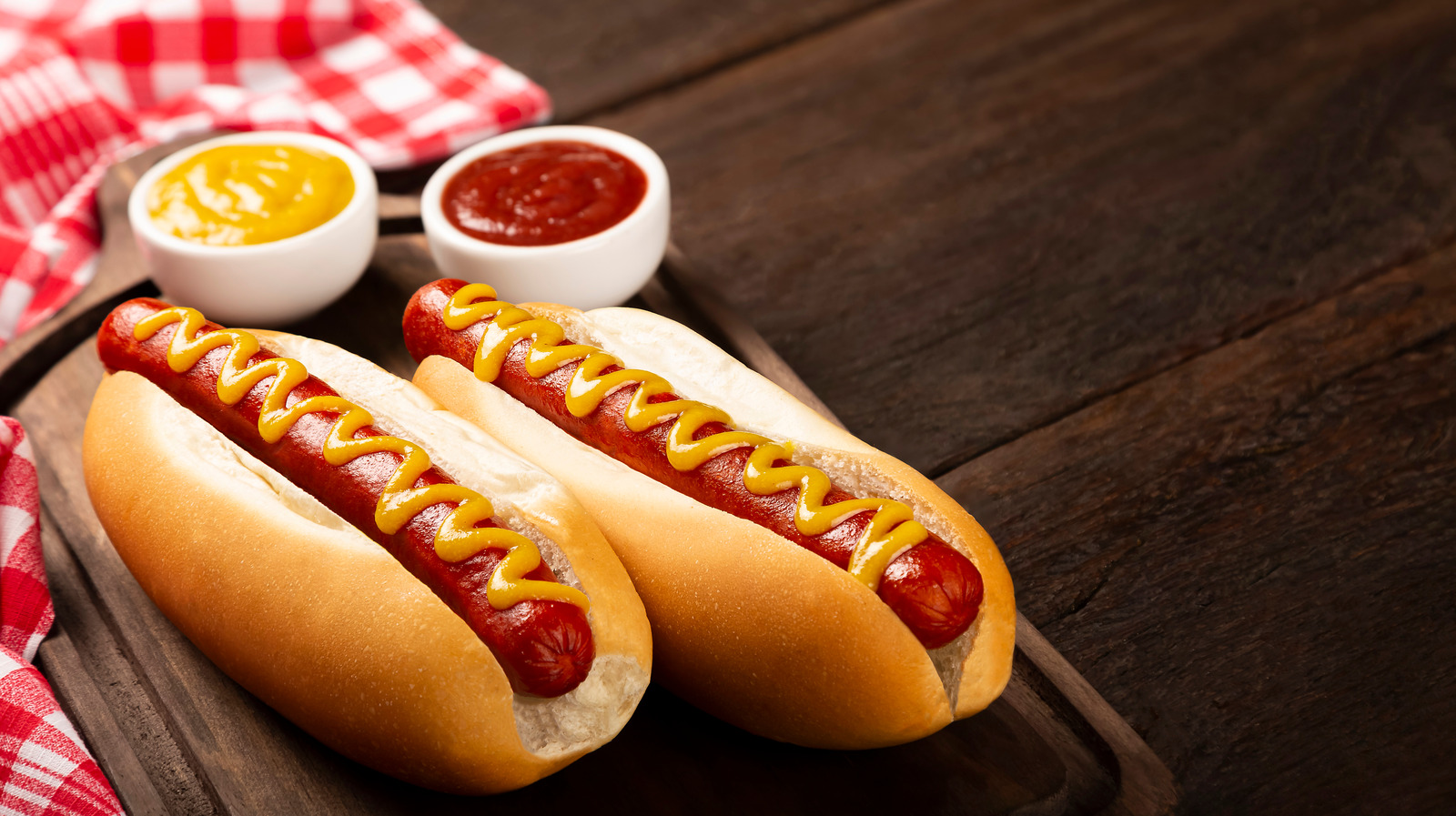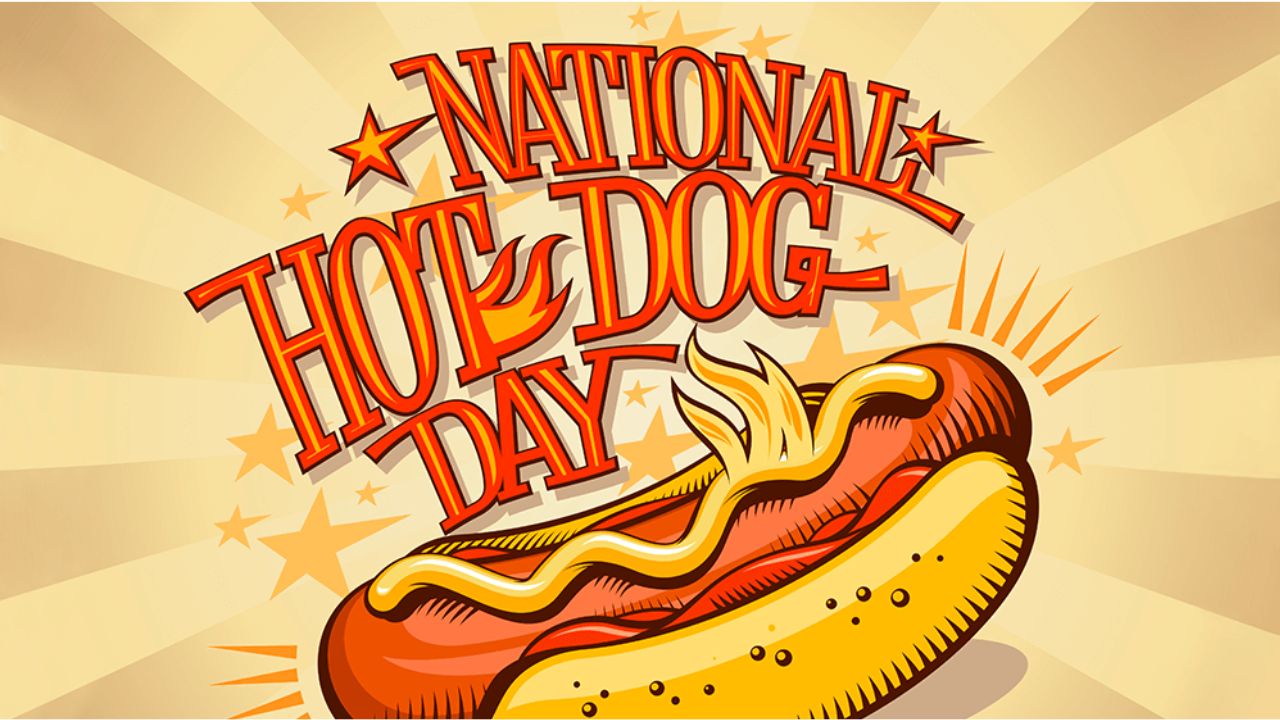Historical Roots of National Hot Dog Day

National Hot Dog Day, celebrated annually on July 23rd, has a rich history deeply rooted in American culture. The origins of this festive day can be traced back to the early 20th century, a time when hot dogs were gaining immense popularity as a beloved street food.
National Hot Dog Day is a day to celebrate the humble hot dog, a food that has been enjoyed by Americans for over a century. Hot dogs are a versatile food that can be enjoyed in many different ways, from classic grilled hot dogs to creative hot dog recipes.
If you’re looking for a way to celebrate National Hot Dog Day, check out our article on Simone Biles net worth 2024 Forbes. You’ll find everything you need to know about the history of hot dogs, as well as some delicious hot dog recipes.
The exact reason behind choosing July 23rd as the date for National Hot Dog Day remains a subject of debate. Some believe it was selected to commemorate the day in 1957 when the National Hot Dog and Sausage Council (NHDSC) was established. Others suggest that the date was chosen simply because it falls during the peak grilling season, when hot dogs are enjoyed at countless backyard barbecues and summer gatherings.
Early Celebrations
The earliest known celebrations of National Hot Dog Day date back to the 1990s. In 1991, the NHDSC launched a campaign to promote the holiday and encourage Americans to celebrate their love for hot dogs. The campaign gained traction, and by the end of the decade, National Hot Dog Day had become a widely recognized event.
Today, National Hot Dog Day is celebrated with a variety of events and activities across the country. Hot dog eating contests, cookouts, and special promotions at restaurants are just a few of the ways Americans show their appreciation for this iconic American food.
In celebration of National Hot Dog Day, we can’t help but wonder where is Simone Biles’ mother from? Her mother, Nellie Biles, is from Belize , a small country in Central America. Back to hot dogs, did you know that Americans consume approximately 150 million hot dogs on the 4th of July alone?
That’s a lot of hot dogs!
Regional Variations and Popular Toppings: National Hot Dog Day
Hot dogs, a beloved American culinary staple, exhibit a remarkable diversity across the United States, with each region boasting unique variations and preferred toppings. This culinary tapestry reflects the country’s rich cultural heritage and regional culinary influences.
From the classic New York-style hot dog to the chili-laden Cincinnati Coney, each regional variation showcases a distinct combination of ingredients, cooking methods, and cultural flair.
New York City-Style Hot Dog
- Ingredients: Beef frankfurter, steamed bun, yellow mustard, sauerkraut, chopped onions
- Cooking Method: Steamed
- Cultural Influences: German immigrants brought the hot dog to New York City in the late 19th century, and its popularity soared among street vendors and working-class New Yorkers.
Chicago-Style Hot Dog
- Ingredients: Vienna beef hot dog, poppy seed bun, yellow mustard, neon green sweet pickle relish, chopped white onions, tomato slices or wedges, dill pickle spear, sport peppers, celery salt
- Cooking Method: Steamed or grilled
- Cultural Influences: Polish and German immigrants introduced their sausage-making traditions to Chicago, and the city’s hot dog culture flourished in the early 20th century.
Cincinnati Coney, National hot dog day
- Ingredients: All-beef hot dog, steamed bun, ground beef chili, shredded cheddar cheese, chopped onions
- Cooking Method: Grilled or deep-fried
- Cultural Influences: Greek immigrants introduced the Coney Island-style hot dog to Cincinnati in the early 20th century, and it quickly became a local favorite.
Hot Dog Etiquette and Cultural Impact

Hot dogs, a quintessential American culinary staple, are not only a tasty treat but also carry cultural significance. While they may seem like a simple food item, there are certain etiquette and cultural norms surrounding hot dogs that enhance the dining experience.
Proper Hot Dog Etiquette
When it comes to hot dog etiquette, the first rule is to avoid using utensils. Hot dogs are meant to be eaten by hand, allowing for a more casual and enjoyable dining experience. While it may be tempting to cut the hot dog into smaller pieces, this is generally frowned upon as it detracts from the authentic hot dog experience.
Another important aspect of hot dog etiquette is choosing the appropriate condiments. While personal preferences may vary, the classic combination of mustard, ketchup, and relish remains a popular choice. It is considered acceptable to add additional toppings, such as onions, sauerkraut, or chili, but moderation is key to avoid overpowering the flavor of the hot dog itself.
Cultural Significance of Hot Dogs
Hot dogs have become deeply ingrained in American culture and popular consciousness. They are often associated with sporting events, picnics, and summer gatherings. The iconic image of a hot dog sizzling on a grill has become synonymous with the American way of life.
Hot dogs have also found their way into various forms of media. In movies and television shows, they are often depicted as a quick and easy meal for characters on the go. The famous “I Love Lucy” episode where Lucy and Ethel attempt to wrap hot dogs in a factory has become a cultural touchstone.
Examples in Popular Culture
- In the 1984 film “Sixteen Candles,” the protagonist Samantha Baker is given a hot dog as a birthday gift, highlighting the food’s association with celebrations.
- The popular animated series “The Simpsons” frequently features hot dogs, portraying them as a staple of American cuisine.
- The annual Nathan’s Hot Dog Eating Contest, held on Coney Island in New York City, has become a cultural phenomenon, attracting thousands of participants and spectators.